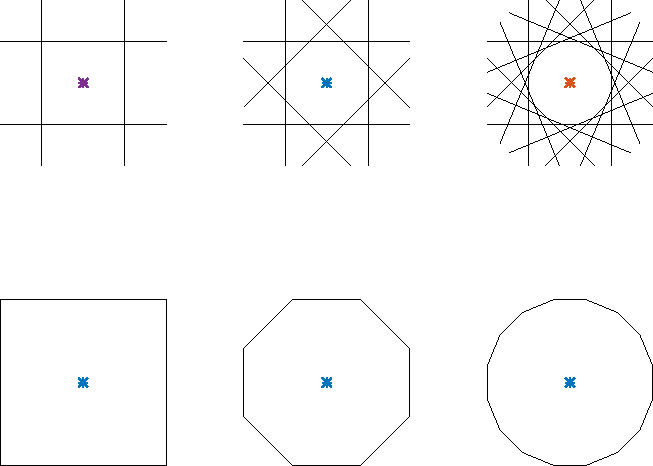The Four-Quadrant PBAP of the previous section readily extends to
![]() -sided polygons. Figure 6 shows a progression from
-sided polygons. Figure 6 shows a progression from
![]() (left), to
(left), to ![]() (middle), and
(middle), and ![]() (right). Along the top of
the figure is the result of using line arrays (as long as available,
yielding the best plane-wave slices in the listening plane). Along
the bottom is the compromise obtained by truncating each line
array to the portion that borders the interior polygonal listening
area (Truncated PPBAP).
(right). Along the top of
the figure is the result of using line arrays (as long as available,
yielding the best plane-wave slices in the listening plane). Along
the bottom is the compromise obtained by truncating each line
array to the portion that borders the interior polygonal listening
area (Truncated PPBAP).

|
http://arxiv.org/abs/1911.07575.